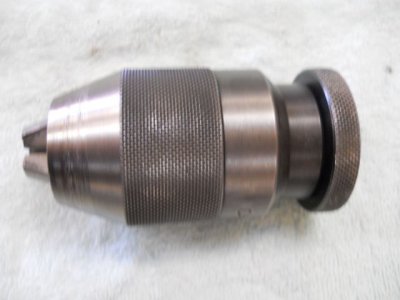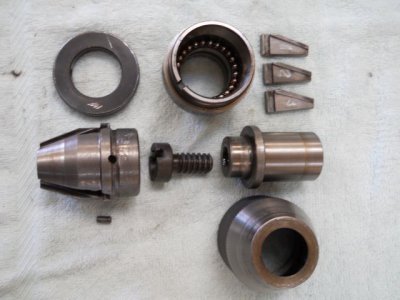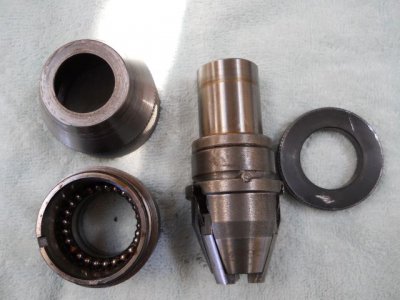I recently bought a Mario Mark 1 benchtop drill press (perhaps 20 years old, made in Taiwan but no longer, possibly an old Harbor Freight model). It's mostly in good shape, and I'm going through it cleaning up what I can. The original chuck was rusty and felt gritty, so I just bought several sizes of used Jacobs chuck and arbors. Now I'm looking at runout, but I don't know what reasonable tolerances on drill chuck runout are.
I measured the runout on one Jacobs arbor: less than 0.0005" on the 3JT taper. But with a 1/32-1/2" almost new chuck the runout on a test piece of 3/8" drill rod was about 0.007" at the chuck end and about 0.013" four inches from the chuck. Are these reasonable numbers?
Also, I'd like to lubricate the innards of these chucks. Is there a good way to do this without pressing them apart? Can I soak them in a good light oil? I hesitate to disassemble them using a vise and aluminum bar stock.
I measured the runout on one Jacobs arbor: less than 0.0005" on the 3JT taper. But with a 1/32-1/2" almost new chuck the runout on a test piece of 3/8" drill rod was about 0.007" at the chuck end and about 0.013" four inches from the chuck. Are these reasonable numbers?
Also, I'd like to lubricate the innards of these chucks. Is there a good way to do this without pressing them apart? Can I soak them in a good light oil? I hesitate to disassemble them using a vise and aluminum bar stock.




